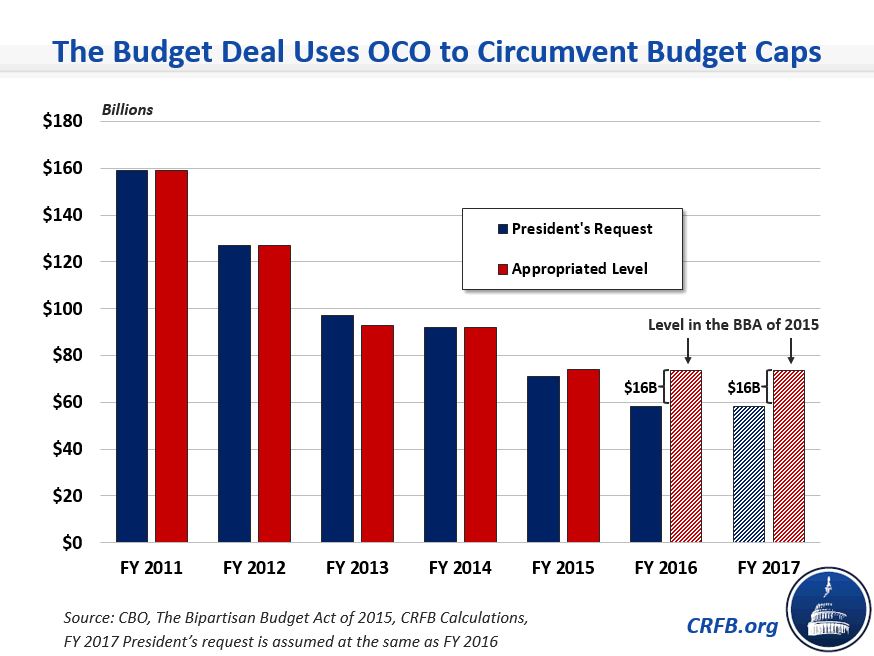A New War Spending Gimmick In The Budget Deal
The Bipartisan Budget Act of 2015 is now the law of the land. While the law does not necessarily prevent a government shutdown, it does raise the sequester-level discretionary spending caps to provide for eventual full funding of the government. In addition, it utilizes (and possibly expands) the war spending gimmick.
The novelty of Overseas Contingency Operations (OCO) funding in the budget deal is that it allows OCO to be used as a slush fund for nondefense discretionary spending via the State and Foreign Operations appropriations bill. When appropriators write up an omnibus appropriations package, they could conceivably shortchange the State and Foreign Operations bill, subject to budget caps, by about $8 billion while increasing the unoffset and uncapped OCO funding to the full level provided in the budget deal – about $15 billion – thus backfilling State and Foreign Operations. By doing this, it frees up room under the nondefense discretionary spending caps for other nondefense spending. Appropriators would be able to spread about $8 billion over the other subcommittee allocations. For the first time, OCO could seemingly become a slush fund for both the Department of Defense and the rest of the nondefense budget. For more on the FY 2016 appropriations process, see our appropriations watch.
So how did we get here? The section of the budget deal on OCO sets amounts of it for both defense and international nondefense spending for both Fiscal Years (FY) 2016 and 2017 at $58.8 billion for defense and $14.9 billion for international nondefense. Last year’s $74 billion in OCO was divided roughly by $65 billion for defense and $9 billion for international nondefense. Relative to the baseline, which assumes FY 2015 levels adjusted for inflation, the $58.8 billion for defense, if appropriated, wouldn't increase spending, but the $14.8 billion for international nondefense would do so by roughly $5 billion in one year.
If Congress had followed the President’s request in his 2016 budget, OCO spending would have declined to $51 billion for defense and $7 billion for international nondefense. If appropriated at these levels, the amount for defense and international nondefense would really be an increase of $16 billion for FY 2016 and at least that much, if not more, for FY 2017, depending on if you assume a downward trend of actual OCO needs. While OCO has been used as a slush fund for defense in the past, total OCO spending was generally close to the President’s request. This budget deal expands the use of the OCO gimmick by providing OCO spending well above the request and using it to backfill nondefense budget in addition to the defense budget.

When appropriators negotiate the omnibus spending bill that must be passed by December 11, they should be mindful that abusing OCO spending in this manner is highly irregular. It would be a complete gimmick to get around the budget caps, which were already raised $50 billion in total for FY 2016 by the Bipartisan Budget Act.


